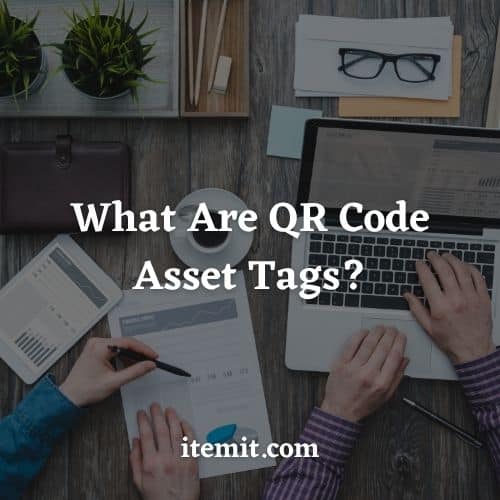You’ll be able to use QR code asset tags to improve your business’ operations. All of your existing auditing, fixed asset management, and financial operations can be streamlined and sped up with QR code asset management.
QR code asset tags link to your asset tracking software, allowing you to create and maintain an accurate register of your business’ assets.

What Are Asset Tags?
Asset tags are physical tags that you stick onto your equipment. They come in many different shapes, sizes, and types. So, you’ll be able to use RFID tags, for example, if you can’t have a visible tag for cases such as high-value asset tracking.
QR code asset tags are the standard tags used for a few reasons:
- Uniquity is easy to guarantee
- They’re customisable
- They’re easy-to-use
- They’re applicable to most asset tracking operations
So, you’ll be able to use QR code asset tags for tools and equipment tracking, as well as IT asset management and fixed asset tracking.
For heavy equipment, you’ll also be able to customise your QR tags. This means that you’ll be able to use metal QR tags to mitigate weathering and other wear and tear.
How Do QR Code Asset Tags Work?
QR code asset tags will contain data that you’ll be able to use to link your physical assets and their digital profiles. In other words, you’ll be able to log a tool on your asset management software, then you’ll be able to stick a QR code asset tag onto this tool and link the two.
When they’re linked, you’ll be able to make use of a variety of different features which will help automate your asset tracking and management.
For example, if you need to check out an asset and mark it as unavailable to your colleagues, all you’ll need to do is scan the QR code in your asset tracking app and press “check out“.
The Benefits Of Asset Tracking
Asset tracking has many benefits. First and foremost, using asset tracking operations means that you’ll lose fewer assets and keep a better eye on your asset register.
As you’ll have a robust and accurate asset register, you’ll also have accurate data for tax returns and insurance processes as you’ll avoid ghost and zombie assets.
There’s also the benefit of speed, too. As you’ll be able to indicate when an asset has a fault or when an asset’s status changes simply by scanning the tag and pressing a button, many of your business’ operations will speed up and be optimised.
Also, every time you scan an asset’s tag, that asset’s last seen location and the user who scanned the tag will also update. This way, you’ll get a tidy audit trail of who has been using assets and where they were when they were interacted with.
To find out more about itemit’s asset tracking software, you’ll be able to book a demo using the button below.
You can also contact the team at team@itemit.com or fill in the form below to start your 14-day free trial. You’ll even be able to use your own asset tags!
Why not check out these blogs:
How Does Inventory Management Work?
The 4 Best Fixed Asset Management Features
Using Computer Asset Tracking Software In Your Small Business
Use Your Own Asset Tags With itemit!
Start your free 14-day trial now
Instant access. No credit card details required.


